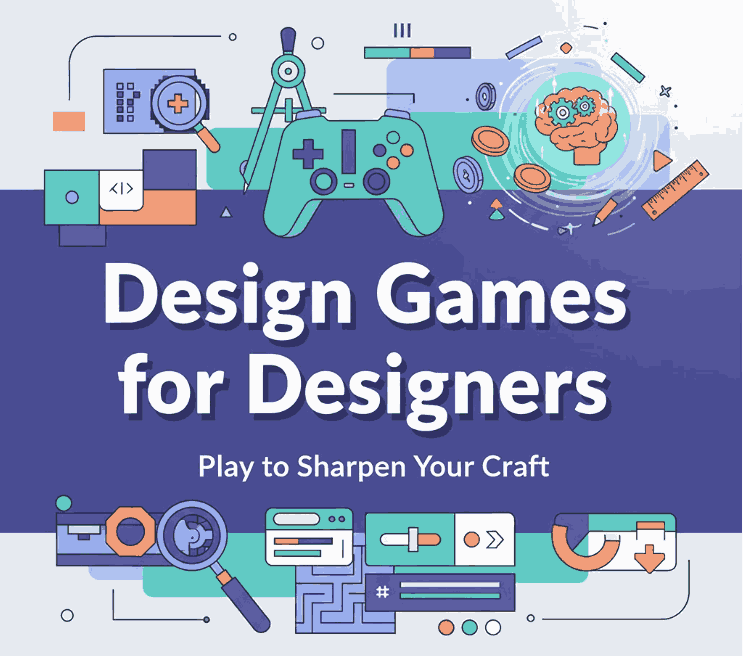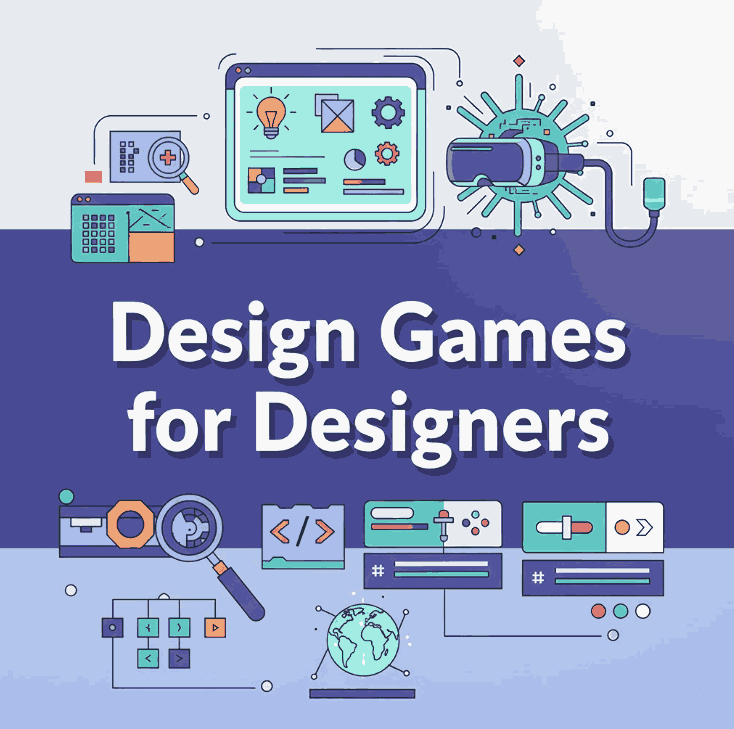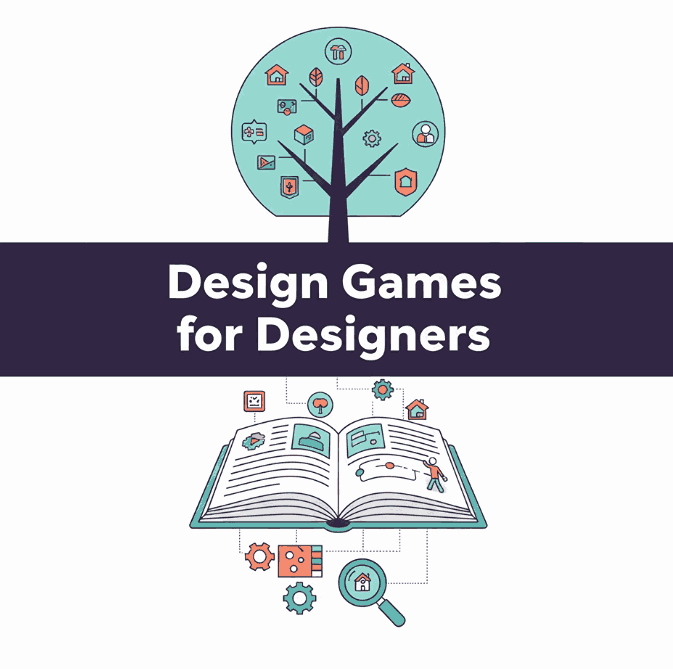
Table of Contents
- Introduction: Why Designers Need Games Too
- The Value of Design Games in Skill Building
- Popular Design Games You Should Try
- 3.1 Kerntype (Typography Spacing)
- 3.2 The Bézier Game (Vector Curves)
- 3.3 Color / Color Method / Hue Games
- 3.4 Can’t Unsee / UI comparison challenges
- 3.5 Shape / Anatomy / Layout puzzles
- 3.6 Other fun ones (e.g. Designercize, Hex Invaders)
- How to Use Design Games in Your Daily Practice
- Applying Game-Inspired Methods in Font / Mockup Work
- Font Mockup Examples to Try with Game Mindset
- Tips to Get the Most From Design Games
- Caveats & When Not to Use Them
- Conclusion & Call to Action
- References
1. Introduction: Why Designers Need Games Too
Learning design through traditional tutorials is useful—but sometimes dry. Design games for designers bring playful and interactive approaches that challenge your eye, speed, intuition, and visual acuity. They help you internalize design principles by doing, experimenting, and testing in bite-sized challenges.
As a font designer or visual creator, using these games sharpens the very senses you rely on (typography spacing, curves, color harmony, layout balance). Think of them as training drills for your design muscles.

2. The Value of Design Games for Designers in Skill Building
Design games offer several advantages:
- Immediate Feedback — You see instantly whether your choice was good or not, which accelerates learning.
- Deliberate Practice — Games isolate specific design skills (kerning, color selection, curve control).
- Low Stakes Environment — You can experiment risk-free, try wrong paths, and learn visually.
- Motivation & Fun — The playful nature helps overcome creative fatigue or mental blocks.
- Retention — Interactive challenges help memory more than passive reading.
Many designers recommend games to keep the eye sharp and the intuition active.
3. Popular Design Games for Designers You Should Try
Here are well-known design games, what they train, and how they help:
3.1 Kerntype (Typography Spacing)
In Kerntype, you adjust spacing between letters to make words “perfectly” kerned. It trains your sense of letter spacing and visual balance.
3.2 The Bézier Game (Vector Curves)
This game helps you master control of anchor points and Bézier handles — skills essential for designing smooth letterforms and vector curves.
3.3 Color / Color Method / Hue Games
These help with your understanding of hues, saturation, contrast, and harmony. Games like Color or Color Method test your ability to match or identify correct color values.
3.4 Can’t Unsee / UI Comparison Challenges
In Can’t Unsee, you’re shown two interface designs and must spot subtle improvements — great for visual sensitivity in UI design.
3.5 Shape / Anatomy / Layout Puzzles
Games like Shape Method or layout puzzles challenge your compositional sense, alignment, and spatial decisions.
3.6 Other Fun Ones (Designercize, Hex Invaders, etc.)
- Designercize prompts random design challenges.
- Hex Invaders is a color/hex code game.
These games combine fun with skill training. Over time, they help you sharpen instincts.
4. How to Use Design Games for Designers in Your Daily Practice
Here’s how to integrate design games into your workflow:
- Set a daily or weekly slot — e.g. 10 minutes at start or end of day.
- Pick one skill to train (kerning, color, curve) and choose the game accordingly.
- Track your progress — record scores, compare sessions to see improvement.
- Apply insights immediately — bring lessons into your font drafts or mockups.
- Rotate games so you exercise multiple design muscles, not just one.
Consistency is key—games are tools for gradual mastery.

5. Applying Game-Inspired Methods in Font / Mockup Work
Here’s how to bring the mindset of design games into your real font work:
- Use interactive mini challenges: e.g. for a few letters, try multiple kerning variants and pick the best by eye (like a mini kerning game).
- Reverse engineer: take a professional type specimen and try to match spacing or curves like a game.
- Color test segments: pick a font mockup and try 3 color versions rapidly (like color games) then pick your favorite.
- Micro-battles: challenge yourself to improve one letter or detail within 5 minutes.
These methods foster reflexes and visual acuity in normal design work.
6. Font Mockup Examples to Try with Design Games for Designers Mindset
Here are some fonts from your collection and mockups you can use as “mini challenges”:
- Aeromove Font — try perfecting curvature or smoothness of motion-inspired letters.
- Overcame Font — test color harmony by quickly generating alternative palettes and picking best match.
- Dripped Ink Font — challenge: refine drip shapes or outlines in iterations.
- Jungle Tribe Font — create mockups in different jungle or nature palette versions and compare.
Treat each mockup as a mini game: generate 3 versions, choose the best, repeat.
7. Tips to Get the Most From Design Games for Designers
- Focus more on the eye than the score — scores decline in value if you only chase them.
- Mix types of games to avoid overtraining one skill.
- At low energy times, play games to “warm up” rather than forcing major work.
- Use games as a break but still related to your craft.
- Reflect after playing: what did you learn about spacing, color, curves? How will you apply it?
8. Caveats & When Not to Use Them
- Games are tools — don’t overdo them or substitute all practice with them.
- Some games simplify context too much; be careful applying lessons blindly to complex work.
- They might frustrate if you’re tired — avoid when your visual acuity is bad.
- Don’t force your style to match game results — use insight, not imitation.
9. Conclusion & Call to Action Design Games for Designers
Design games for designers are more than playful distractions — they are training modules for your visual sense, typographic eye, and design reflexes. By incorporating them into your routine, you build sharper instincts that feed into your font creation, mockup design, and visual branding.
Action: Pick one of the games above (e.g. Kerntype or Bézier Game). Spend 5–10 minutes daily for a week. After that, try applying a lesson into one font detail (like kerning or curve). See how your sensitivity improves.
References
- Toptal — “Sharpen Your Skills With Fun Online Games for Designers”
- UXDesign.cc — “A list of games for bored (and curious) UX/UI designers”
- EasyEdit blog — “15 Best Interactive Games for Designers”
- Yes I’m a Designer — “7 Games that will teach you Graphic Design”
